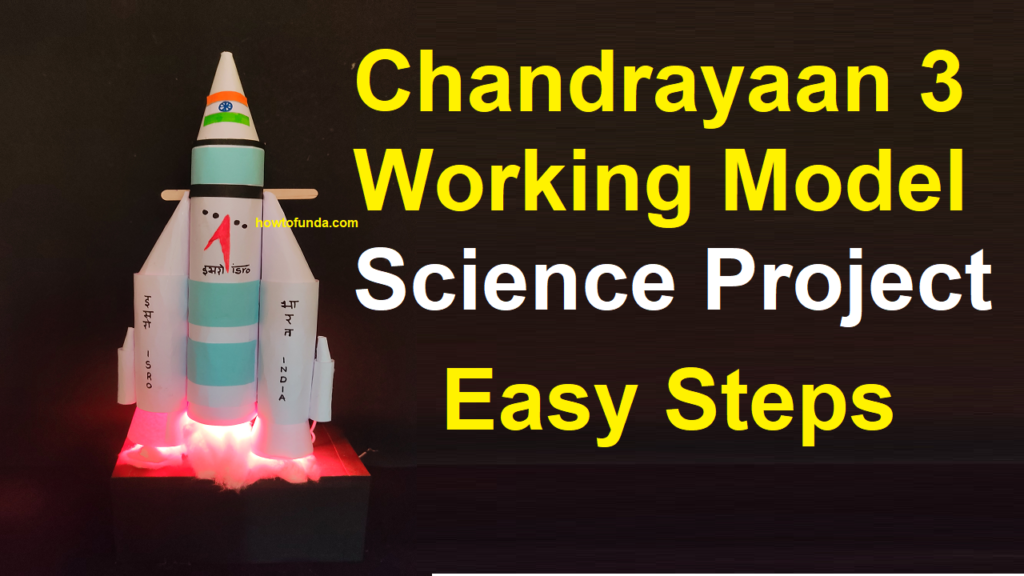1. What is Chandrayaan-3?
- Answer: Chandrayaan-3 is India’s third lunar exploration mission, following Chandrayaan-1 and Chandrayaan-2.

2. What is the primary objective of Chandrayaan-3?
- Answer: The primary objective of Chandrayaan-3 is to explore the lunar surface, conduct scientific experiments, and further enhance India’s capabilities in lunar exploration.
3. How is Chandrayaan-3 different from its predecessors?
- Answer: Chandrayaan-3 is expected to focus solely on the lunar lander and rover components, omitting the orbiter, which was a part of Chandrayaan-1 and Chandrayaan-2.
4. What agency is responsible for Chandrayaan-3?
- Answer: The Indian Space Research Organisation (ISRO) is responsible for the Chandrayaan-3 mission.
5. When was Chandrayaan-3 officially announced?
- Answer: As of my last knowledge update in January 2022, the official announcement for Chandrayaan-3 was made by ISRO in January 2020.
6. What is the anticipated launch date of Chandrayaan-3?
- Answer: The exact launch date of Chandrayaan-3 is subject to change, and it is best to check with official sources for the latest information.
7. What components are expected in Chandrayaan-3’s lander and rover?
- Answer: The lander and rover components are expected to carry scientific instruments for studying the lunar surface, geology, and conducting experiments.
8. How does Chandrayaan-3 contribute to India’s space exploration goals?
- Answer: Chandrayaan-3 contributes to India’s space exploration goals by expanding its knowledge of the Moon, conducting scientific research, and showcasing technological advancements.
9. What challenges does ISRO face in planning lunar missions like Chandrayaan-3?
- Answer: Challenges may include ensuring the successful landing and operation of the lander and rover on the lunar surface, as well as managing technical complexities.
10. How does Chandrayaan-3 contribute to global lunar exploration efforts?
Answer: Chandrayaan-3 contributes to global lunar exploration efforts by adding new data and insights about the Moon, fostering international collaboration, and advancing space exploration technologies.
11. Will Chandrayaan-3 have any international collaborations?
Answer: While there were discussions about potential international collaborations, specific details would need to be confirmed by ISRO or official sources.
12. How does Chandrayaan-3 impact India’s standing in space exploration?
Answer: Chandrayaan-3 enhances India’s standing in space exploration by demonstrating continued commitment to lunar exploration, technological advancements, and scientific achievements.
13. What advancements in technology are expected in Chandrayaan-3?
Answer: Chandrayaan-3 is expected to incorporate advancements in landing and rover technologies, improving upon the experiences gained from Chandrayaan-2.
14. What scientific questions does Chandrayaan-3 aim to answer about the Moon?
Answer: Chandrayaan-3 aims to address scientific questions related to the Moon’s geology, surface composition, and other aspects to enhance our understanding of lunar processes.
15. How long is Chandrayaan-3 expected to operate on the lunar surface?
Answer: The operational lifespan of Chandrayaan-3 on the lunar surface will depend on mission success, design specifications, and the performance of its components.
16. What were the key findings from Chandrayaan-1 and Chandrayaan-2?
Answer: Chandrayaan-1 discovered water molecules on the lunar surface, and Chandrayaan-2 contributed valuable data on lunar topography and mineral composition.
17. How does ISRO plan to address challenges faced during Chandrayaan-2 for Chandrayaan-3? – Answer: ISRO learns from each mission and incorporates improvements based on lessons learned to enhance the chances of success in subsequent missions like Chandrayaan-3.
18. What is the significance of exploring the Moon for future space exploration missions? – Answer: Exploring the Moon provides insights into planetary processes, resources, and serves as a potential stepping stone for future human space exploration missions.
19. How does Chandrayaan-3 contribute to India’s scientific and technological capabilities? – Answer: Chandrayaan-3 contributes by showcasing India’s ability to plan, design, and execute complex space missions, fostering advancements in science and technology.
20. What kind of instruments are expected on Chandrayaan-3’s rover?
Answer: The rover is expected to carry instruments for analyzing lunar soil, studying surface features, and conducting experiments related to lunar geology.
21. How does Chandrayaan-3 impact public interest in space exploration?
Answer: Chandrayaan-3 generates public interest by showcasing India’s achievements in space exploration, inspiring students, and fostering a sense of national pride.
22. What role does public awareness play in the success of lunar missions like Chandrayaan-3? – Answer: Public awareness generates support and interest, promoting space science education and encouraging future generations to pursue careers in space-related fields.
23. How does Chandrayaan-3 align with India’s broader space exploration goals?
Answer: Chandrayaan-3 aligns with India’s broader space exploration goals by advancing capabilities, contributing to global knowledge, and positioning India as a key player in space research.
24. How does Chandrayaan-3 address the potential for resource utilization on the Moon? – Answer: Chandrayaan-3 may carry instruments to study lunar resources, contributing to future discussions on potential resource utilization for scientific or exploration purposes.
25. What educational opportunities does Chandrayaan-3 create for students interested in space science?
Answer: Chandrayaan-3 inspires students by offering educational opportunities, promoting STEM (science, technology, engineering, and mathematics) fields and encouraging careers in space science and technology.

